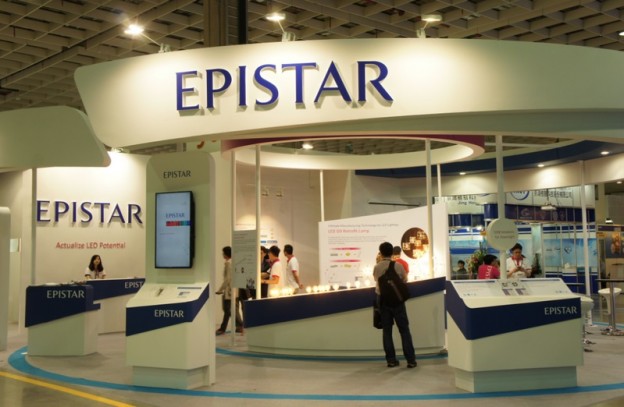Taiwan-based LED chip manufacturer Epistar announced its business plan for 2018 will be around five cores—backlighting, high-end LED lighting, infrared application, automotive lighting, and innovative digital display. Ming-Chun Chou, General Manager of Epistar, stated the company will officially produce Mini LED in 2Q18 at the earliest.
 |
|
(Image: LEDinside) |
The LED industry used to be one of the four worst performing industries in Taiwan. Over the recent years, new technologies have emerged and the industry once again gained attention. A majority of Taiwanese LED firms reported increased earnings this year after Chinese companies stopped lowering their product prices. Innovations such as Mini LED and Micro LED also lift the industry’s sentiment. The following is Epistar’s outlook for the future of the LED industry in Taiwan.
Q: How does Epistar see the recent changes in Taiwan’s LED industry?
A: In the past, Taiwanese LED firms started their businesses by producing LED lighting products. The global LED lighting market turned into a red ocean after the Chinese government supported companies in China with a huge amount of serial investments. The rise of the Chinese LED industry did not just affect a part but the whole LED supply chain. Only until recently the situation changed because they are shifting focus from LED to semiconductor technology.
Tier 1 Taiwanese LED firms are finding ways to differentiate themselves from Chinese competitors. To some extent, it is urgent and necessary in order to go through this hardship.
Q: What opportunities can Mini/ Micro LED bring to the industry?
A: A standard LED chip is in a size of around 200 to 300µm, and a chip for fine-pitch LED displays is as small as 150µm. The size of Mini LED is around 50-60µm, considered the predecessor of Micro LED, which is a lot smaller, about 15µm. Epistar attempts to mass produce Mini LED for fine-pitch displays and direct-lit LED backlights as the first step.
Looking at the processes of manufacturing Micro LED, even if there are some new solutions devised to resolve the challenges in those processes, Epistar points out the major problem is the inability to mass produce the product. That delays the mass production and commercialization of Micro LED.
It needs at least two to three years for Micro LED to hit mass production, so Epistar intends to focus on the production of Mini LED for the time being. For many LED companies, they can use existing technologies and equipment to produce Mini LED without more investments.
Mini LED-based backlights can be used in different devices from smartphones to large scale TVs. Epistar surveyed with its downstream partner that it requires 3,000-5,000 Mini LED chips to light a 6-inch smartphone display. This idea can hit mass production if the number of chips can be cut by half and the backlight efficiency stays the same.
Epistar anticipates to officially produce Mini LED-based products in 2Q18.
Q: What will Epistar contribute to the development of new technologies?
A: Currently, only Osram and Epistar have the technology to supply RBG Micro LED chips. That is a good starting point for Epistar.
Among RGB LED chips, red LEDs are the hardest to produce. They are made of non-transparent substrates and the processes are more challenging and complicated than those of producing blue and green LEDs. Price wise, the price of a red LED is roughly equivalent to the combined price of a blue LED and a green LED. Hence, the yield of red LED manufacturing will be the key. Epistar takes pride in its proprietary manufacturing technologies of red LED.
With that as a big part of its competitiveness, Epistar processes semiconductor materials and turn them into other high-margin, niche applications.
The other advantage Epistar has to respond to the diverse and fast-growing market demand is its capacity that creates economies of scale and makes the cost structure competitive. The firm is able to provide the consumer electronics market the precise amount of shipment.
In addition, it has adequate intellectual property rights to raise the reliability of its products, protect its customers, and collaborate with major multinational corporations.
Q: What will be the company’s future plans?
A: Backlight application, high-end LED lighting, infrared application, automotive lighting, and high-grade digital display will be Epistar’s five key focuses in the future.
More interdisciplinary collaboration is required to drive the development of Micro/Mini LED forwards and make breakthroughs.
Epistar will continue the transformation to be a high-tech company devising new solutions and technologies, and LED will still be its main product for the next three to five years.












